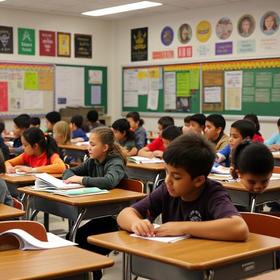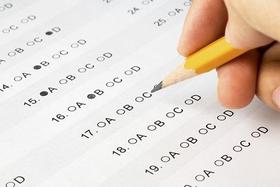Serving 512 students in grades 9-12, Baker Early College ranks in the top 20% of all schools in Oregon for overall test scores (math proficiency is top 20%, and reading proficiency is top 20%).
The percentage of students achieving proficiency in math is 50-59% (which is higher than the Oregon state average of 31%). The percentage of students achieving proficiency in reading/language arts is ≥50% (which is higher than the Oregon state average of 44%).
Minority enrollment is 19% of the student body (majority Hispanic), which is lower than the Oregon state average of 42% (majority Hispanic).
Quick Facts (2025-26)
- School Type: Charter School
- Grades: 9-12
- Enrollment: 512 students
- Minority Enrollment: 19%
- Graduation Rate: 90-94% (Top 10% in OR)
- Overall Testing Rank: Top 20%
- Math Proficiency: 50-59% (Top 20%)
- Reading Proficiency: ≥50% (Top 50%)
- Science Proficiency: ≥80% (Top 1%)
- Source: National Center for Education Statistics (NCES), OR Dept. of Education
Top Rankings
Baker Early College ranks among the top 20% of public schools in Oregon for:
Category
Attribute
Overall Rank
Math Proficiency
Science Proficiency
Graduation Rate
School Overview
Baker Early College's student population of 512 students has grown by 65% over five school years.
School Type
Grades Offered
Grades 9-12
(Supplemental Virtual)
(Supplemental Virtual)
Total Students
512 students
Gender %
Total Classroom Teachers (22-23)
1 teacher
Year Founded
2008
School Calendar
Last Day of School
Mon. May 25, 2026
School Rankings
Baker Early College ranks within the top 20% of all 1,174 schools in Oregon (based off of combined math and reading proficiency testing data).
The diversity score of Baker Early College is 0.34, which is less than the diversity score at state average of 0.60. The school's diversity has stayed relatively flat over five school years.
Overall Testing Rank
#226 out of 1174 schools
(Top 20%)
(Top 20%)
Math Test Scores (% Proficient)
50-59%
31%
Reading/Language Arts Test Scores (% Proficient)
≥50%
44%
Science Test Scores (% Proficient)
≥80%
30%
Student-Teacher Ratio
n/a
17:1
American Indian
1%
1%
Asian
2%
4%
Hispanic
6%
26%
Black
2%
3%
White
81%
58%
Hawaiian
n/a
1%
Two or more races
8%
7%
All Ethnic Groups
Graduation Rate
90-94%
81%
Eligible for Free Lunch
1%
51%
Eligible for Reduced Lunch (12-13)
1%
7%
School Statewide Testing
School District Name
Source: National Center for Education Statistics (NCES), OR Dept. of Education
Profile last updated: 02/09/2025
Frequently Asked Questions
What is Baker Early College's ranking?
Baker Early College is ranked #226 out of 1,174 schools, which ranks it among the top 20% of public schools in Oregon.
What schools are Baker Early College often compared to?
Baker Early Collegeis often viewed alongside schools like Alliance Charter Academy, Baker Web Academy by visitors of our site.
What percent of students have achieved state testing proficiency in math and reading?
50-59% of students have achieved math proficiency (compared to the 31% OR state average), while ≥50% of students have achieved reading proficiency (compared to the 44% OR state average).
What is the graduation rate of Baker Early College?
The graduation rate of Baker Early College is 90-94%, which is higher than the Oregon state average of 81%.
How many students attend Baker Early College?
512 students attend Baker Early College.
What is the racial composition of the student body?
81% of Baker Early College students are White, 8% of students are Two or more races, 6% of students are Hispanic, 2% of students are Asian, 2% of students are Black, and 1% of students are American Indian.
What grades does Baker Early College offer ?
Baker Early College offers enrollment in grades 9-12 (Supplemental Virtual).
What school district is Baker Early College part of?
Baker Early College is part of Baker School District 5j.
School Reviews
Review Baker Early College. Reviews should be a few sentences in length. Please include any comments on:
- Quality of academic programs, teachers, and facilities
- Availability of music, art, sports and other extracurricular activities
Recent Articles

How Public Schools Support Students on Free / Reduced-Lunch Programs
Explore how U.S. public schools support students eligible for free or reduced-price lunch through nutrition, academic, and wraparound services in 2025.

Hidden Costs of Public Schools: Fees, Supplies & Extras
Explore the hidden costs in public schools—fees, supplies, extracurriculars—and how parents can plan for them in 2025.

Public School Funding 2025: What Families Should Know
Essential insights on public school funding in 2025—how it works, what’s changing, and what families should know to stay ahead.




